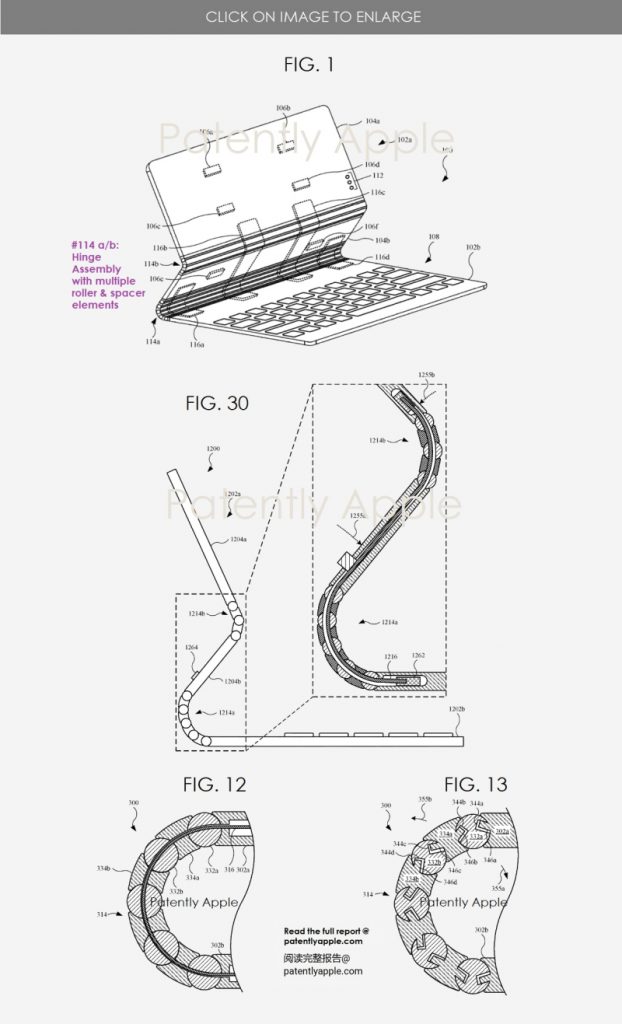Apple introduced the first iPad model in 2010. The device, which has improved a lot since then, now has the power of a computer. This has led iPads to be seen as laptop alternatives. But as powerful as it is, the iPad is a touchscreen device, and it needs a keyboard to replace laptops. Apple, on the other hand, solves this deficiency with the keyboard support it provides on accessories. The company’s keyboards turn the iPad into a 2-in-1. However, the US tech giant is determined to improve this system Lastly, Apple granted patent describes a new Magic Keyboard that includes multiple roller hinges that provide greater angular options for iPad. Here are the details…
Apple granted patent describes a new Magic Keyboard that includes multiple roller hinges
Today the U.S. Patent and Trademark Office officially granted Apple a new patent that expands on a possible next-gen hinge system for Apple’s Magic Keyboard. The new multiple roller hinge system would provide users with more flexibility in angling the iPad to their liking as opposed to today’s single angle design. Apple’s possible next-gen Magic Keyboard could contain multiple new roller and spacer elements as well as retention structures that could provide tension to increase the frictional force between the roller and spacer elements, and/or provide counterbalance to offset the weight of the iPad.

The hinge assemblies may include one or more roller elements (including cylindrical bodies) engaged with spacer elements (or linking elements), with a spacer element positioned between adjacent roller elements. Each spacer element can provide multiple surfaces, each of which is contoured to the shape of a roller element. The movement of the hinge assembly is based in part upon the roller elements rotating along the spacer elements, as well as movement of the roller elements and the spacer elements in multiple dimensions (that is, in a three-dimensional space).
Further, in some instances, the roller elements and the spacer elements synchronously move together to provide a more fluid movement of the hinge assembly, as well as the sections (of the accessory device) coupled together by the hinge assembly. Apple notes that when the accessory device holds an electronic device, the counterforce, or holding force, provided by the accessory device depends upon the angle at which the hinge assembly positions the section(s) holding the electronic device.
In this regard, the force provided by the hinge assembly changes based upon the position of the hinge assembly. Accordingly, the counterforce provided by the hinge assembly is a function of the angular position of the section(s). The aforementioned variables can all be manipulated to provide an accessory device with a desired user experience.
RELATED:
- An All-screen Apple Foldable Notebook Is in the Works, Could Launch in 2025
- The Periscope Camera Will Be Exclusive to Apple’s iPhone 15 and 16 Ultra
- Rumors: Apple Might Not Launch a Folding iPad Even in 2024
- Apple’s Emergency SOS Via Satellite Feature Saves Two Lives in Canada!
- iFixit tear down the new MacBook Pro and test Apple’s official repair guides
(Source)







